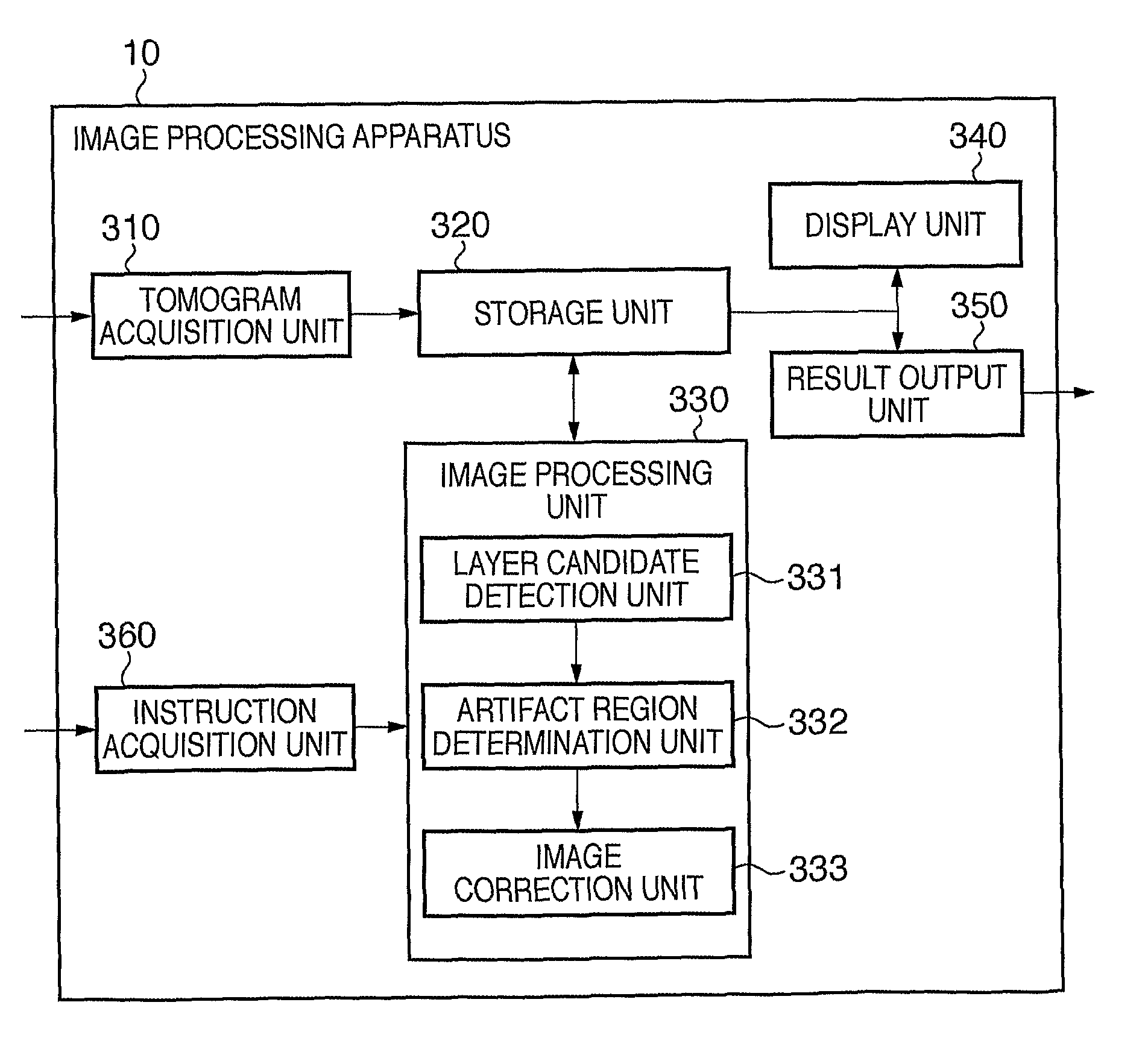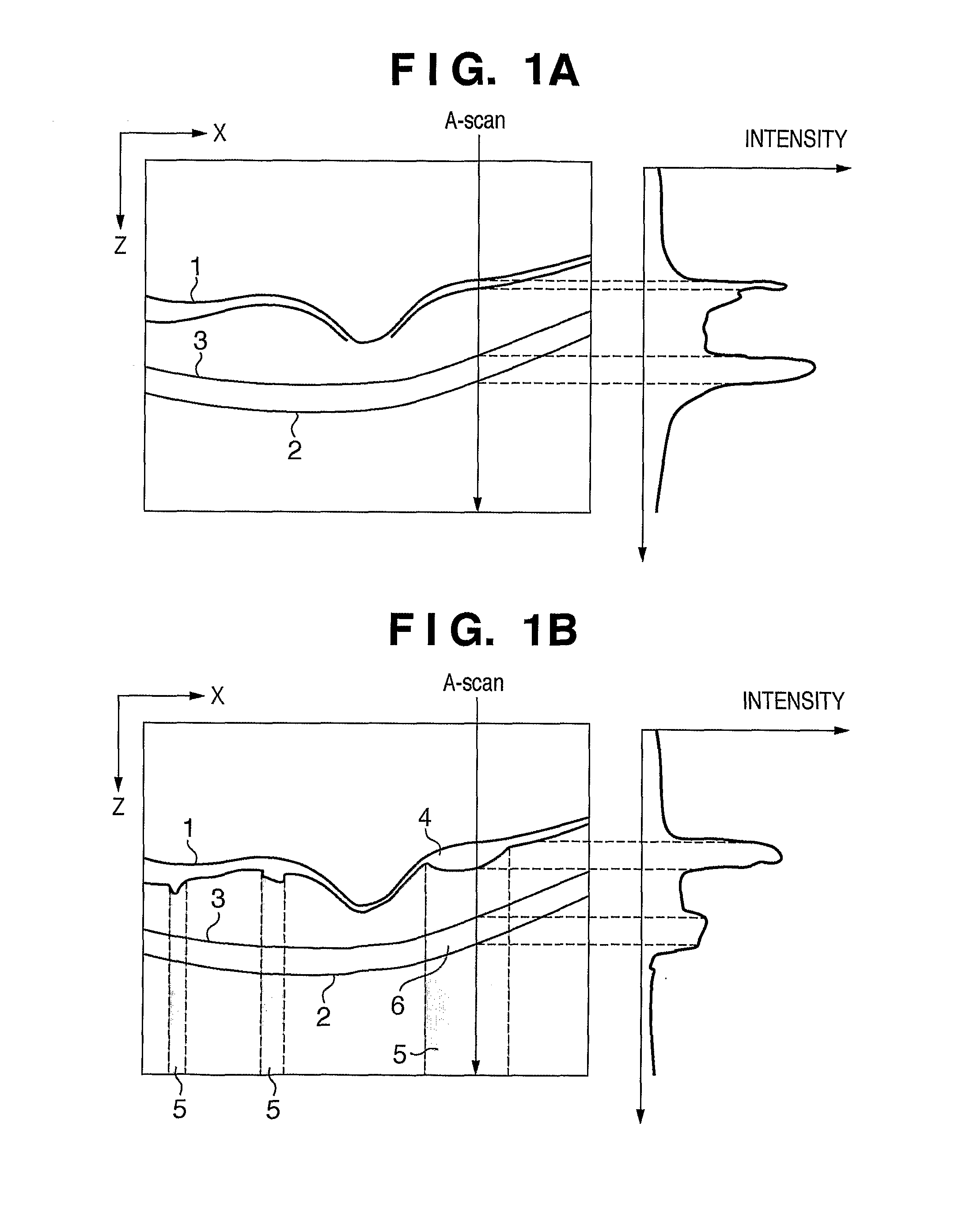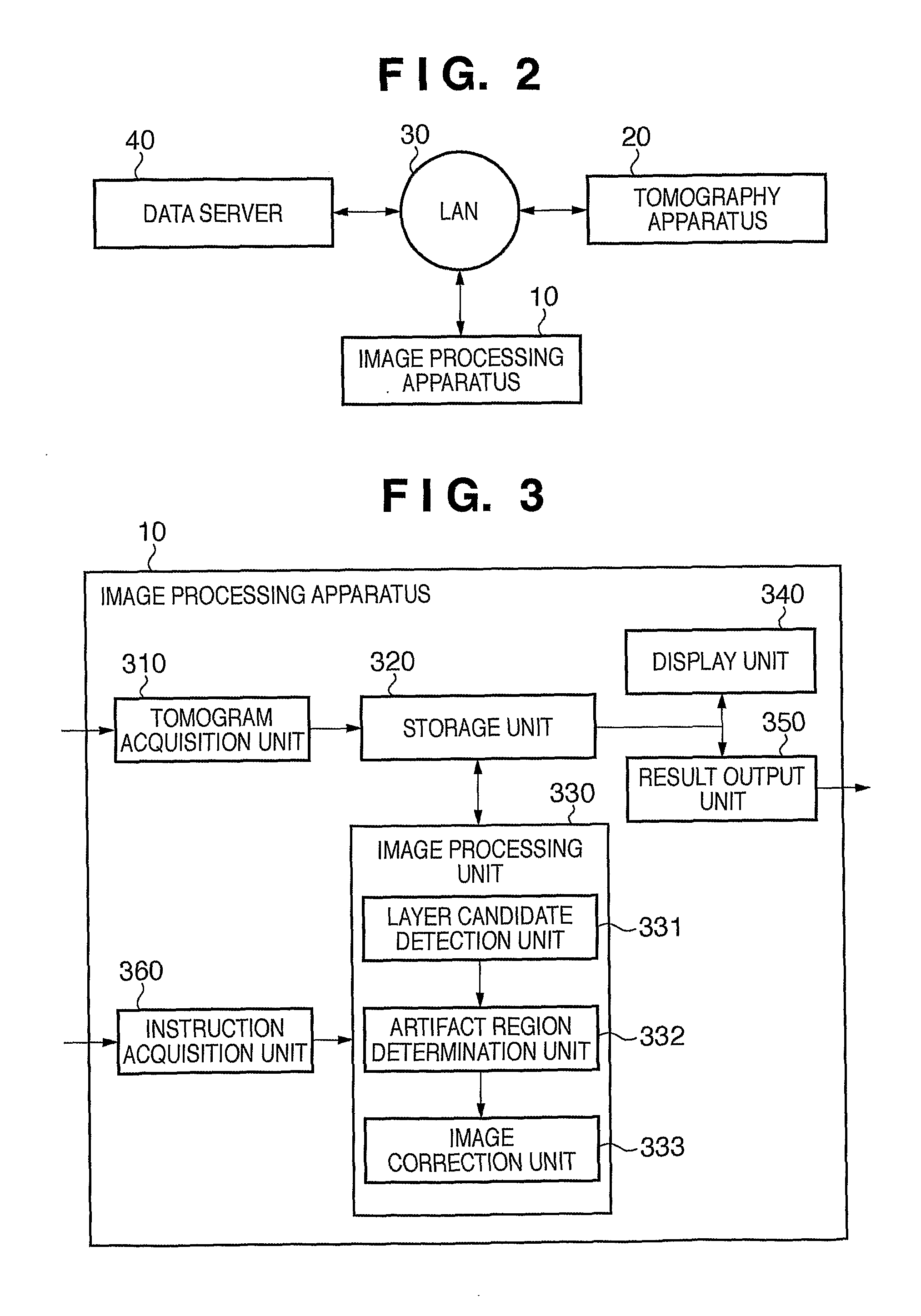Image processing apparatus, control method thereof, and computer program
- Summary
- Abstract
- Description
- Claims
- Application Information
AI Technical Summary
Benefits of technology
Problems solved by technology
Method used
Image
Examples
first embodiment
[0044]When an image of an eye to examined (an eye as an examination target) is to be captured by an OCT apparatus, if a blood vessel or exudate exists on a retina, since the intensity of measurement light lowers, a retinal pigment epithelium is attenuated on the obtained image, and it is difficult to detect the layer. Hence, in this embodiment, an artifact region is determined from a tomogram of an eye to be examined, and image correction is applied to that region according to a statistical amount in the region.
[0045]FIG. 2 is a block diagram showing the arrangement of apparatus connected to an image processing apparatus 10 according to this embodiment. As shown in FIG. 2, the image processing apparatus 10 is connected to a tomography apparatus 20 via an optical fiber and an interface of, for example, USB or IEEE1394. The tomography apparatus 20 is connected to a data server 40 via a local area network (LAN) 30 based on, for example, Ethernet®. Note that the image processing apparat...
second embodiment
[0092]In this embodiment, not only image correction is performed in an artifact region like in the first embodiment, but also a predetermined layer is detected from the corrected image. This embodiment applies image correction even to a region where an artifact is generated and intensities are attenuated, so as to facilitate detection of remaining edge information, and allows to calculate a more precise layer position by detecting that edge information.
[0093]Since the arrangement of apparatus connected to an image processing apparatus 10 according to this embodiment is the same as that in the first embodiment, a description thereof will not be repeated. FIG. 8 is a functional block diagram of the image processing apparatus 10 according to this embodiment. Referring to FIG. 8, an image processing unit 801 of this embodiment is different from the arrangement of the image processing unit 330 of the image processing apparatus 10 of the first embodiment in that a layer decision unit 334 ...
third embodiment
[0116]In this embodiment, in place of determination of an artifact region using only a tomogram in the first and second embodiments, a projection image is generated from a tomogram of an eye to be examined, and position information of tissue or a morbid portion extracted from the projection image is back-projected onto the tomogram, so as to narrow down artifact candidate regions in advance. In general, it is easier to calculate position information of an artifact region caused by, for example, a blood vessel (or bleeding) from a projection image than from only a tomogram. Hence, this embodiment will explain a case in which a blood vessel (bleeding) region is extracted from a projection image, that position information is mapped onto a tomogram, and an edge portion of an artifact region is searched for and specified around the mapped region, so as to calculate a range of the artifact region at higher precision.
[0117]Since the arrangement of apparatus connected to an image processing...
PUM
 Login to View More
Login to View More Abstract
Description
Claims
Application Information
 Login to View More
Login to View More - R&D
- Intellectual Property
- Life Sciences
- Materials
- Tech Scout
- Unparalleled Data Quality
- Higher Quality Content
- 60% Fewer Hallucinations
Browse by: Latest US Patents, China's latest patents, Technical Efficacy Thesaurus, Application Domain, Technology Topic, Popular Technical Reports.
© 2025 PatSnap. All rights reserved.Legal|Privacy policy|Modern Slavery Act Transparency Statement|Sitemap|About US| Contact US: help@patsnap.com



